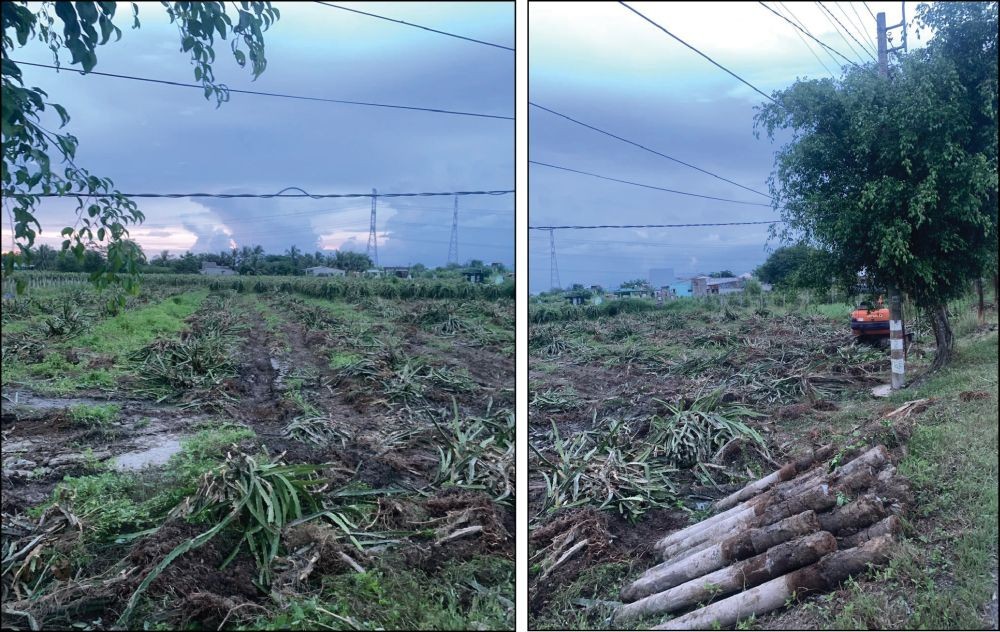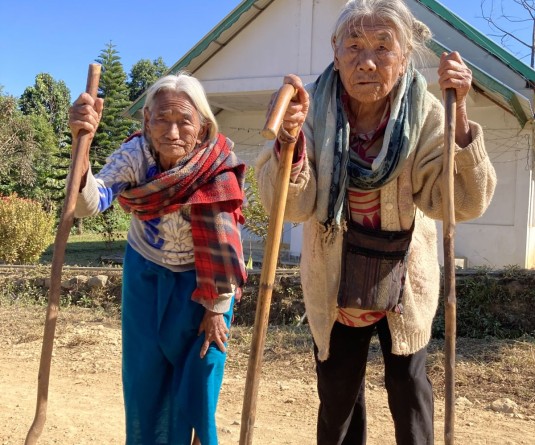(Pictures captured during the visit to Long An province)

Alemla Imchen
PhD Scholar, SASRD, Nagaland University
Dragon fruit (Hylocereus spp.) is a fast-returning perennial fruit crop, considered a super fruit with economic production in the first year of planting itself, and full production within three to five years, adaptable to different agroclimatic conditions with high nutraceutical values. Owing to all these benefits, this beautiful exotic fruit has gained immense popularity over the past decade in the state and country as a whole. According to a technical bulletin published by ICAR- NIASM (2021), India’s dragon fruit production increased drastically from only 400 ha in 2017 to 3000- 4000 ha in 2020.
Furthermore, an estimated projection shows that the area under dragon fruit cultivation is expected to rise more than ten times i.e. ~ 30,000 ha in the next five years (2025), contingent on market demands, consumer acceptability and government policies.
On a visit to Vietnam in the month of September 2022, the largest producer and exporter of dragon fruit in the world, with high anticipation to see luscious dragon fruit plantation with beautiful pink fruits and learn more about their cultivation tactics, we visited one of the villages in Long An province, which is one of the largest dragon fruit growing regions in the country, just around 2 hours away from the urban Ho Chi Minh city. There were vast lands with dragon fruit plantations, however, people were cutting down the plantations, with uprooted concrete poles lying on the side and hundreds of dragon fruit stems lying on the weed-filled ground. There was very low maintenance of the farms with flooded, diseased, unmanaged orchards with over-ripened fruits on the plants. On discussion with a few locals, it was known that they were replacing the dragon fruit plantation with other fruits because of no market or very low market price to sell (10,000 VND/ ₹30- 40 per kilo) which does not cover maintenance expenses. This was a very discouraging sight to encounter as our people are picking up with the plantation of this exotic fruit.
According to available online reports on dragon fruit cultivation in Vietnam, it is said that for the past few years, there has been a lack of order in the development of dragon fruit cultivation in the country and the planting areas under dragon fruit production which was expected to reach 49,000 hectares by 2020, however, had already surpassed 65,000 hectares by that time, exceeding the original goal by over 30%. In India, around 80% area of dragon fruit orchards are still under new cultivation with less than 18 months old plantations which on attainment of full maturity in 2-3 years’ time will start to produce on a commercial scale. In a recent conclave on dragon fruit this year, the centre has announced to promote dragon fruit cultivation to 50,000 hectares in five years. With ever-increasing production and the ease at which this plant grows, as cultivation is not only limited to land cultivation but grows successfully in backyards and terraces in urban areas as well, it is to hope that the demand matches the production, if not, the incidents witnessed in Vietnam may become a reality in our state and country.
There should be proper market roadmap to match with the increased production in the near future so that entrepreneurs and farmers diving into the business today may not incur losses in the future, also proper record keeping and order in development of dragon fruit cultivation should be a focus, with proper processing facilities, if a glut in production may transpire in the near future.
Growing and cultivation practices of Black gram
Black gram (Vigna Mungo L) which is high in phosphoric acid content is a widely used and most valued pulse in India primarily due to its nutritive values. It is known with many names such as urd dal, urd bean, black bean, black lentils etc. It is an erect upright habitat with thick hair and flat nodules. Blackgram or urd bean can be grown as sole crop, mixed crop, cash crop or crop under rainfed or semi–irrigated condition in Kharif and summer season.
Importance of growing black gram:
• It can be consumed as dhal or split seeds either husked or unhusked
• It is the chief constituent of papad.
• The haulms of black gram can be used as fodder.
• The husk and split beans can be used as livestock feed.
• It possesses a deep root system that binds to soil particles and thereby prevents erosion.
• It can be used as a green manure crop.
• It contains 25% protein, 1.83% fat, 61% carbohydrate.
• It fixes the biological nitrogen in soil by symbiosis with rhizobium and improves soil fertility.
Nutritional facts of black gram: Moisture - 10.9%, Protein - 24%, Fat - 1.4%, Fibre - 0.9%, Minerals - 3.2%, Carbon - 59.6%, Calcium - 134 mg, Phosphorous - 385 mg, Iron - 9.1 mg and Calorific value - 341
Crop system and crop rotation: Crop rotation is the growing of two or more crops in the same piece of land by season followed by season. Black gram has the potential to control land degradation by fixing biological nitrogen, adding fertility to soil.
Suggested crop rotation for black gram are –
Rice — Mustard — Black gram,
Rice — Vegetables — Black gram,
Rice — Potato — Black gram
Soil type: It can be grown on a wide variety of soils, but sandy loam soil is preferable. However, deep loam light textured soil with pH 6.5—7.5 is considered ideal.
Land preparation: Land is to be ploughed 2-3 times followed by leveling. For Kharif crop land needs to be leveled properly and care should be taken to provide adequate drainage. Water stagnation in the field should be avoided as it affects the crop adversely.
Varieties : Varieties suitable for our region are Pant Urd 31, PU-10-23, Kota Urd 4, T 122, T 27, Pant U 19, T9, Shekar & Tripura Maskolai.
Seed rate: For rainfed areas: 15-18 Kg/ha, for irrigated areas – 18 to 20 kg/ha, for Kharif sowing: 12-15 Kg/ha and for spring sowing: 20-25 Kg/ha is recommended.
Spacing: For Kharif season: Row to row 30-35 cm and plant to plant 10 cm. For Spring season: Row to row should be 20-25 cm and plant to plant 5 cm.
Fertilizer management:
Compost or FYM @ 5-10 t/ha should be applied during land preparation for improving soil structure. To get full potential of high yielding varieties, the crop requires a dose of 20 Kg/ha Nitrogen, 40 Kg/ha Phosphorous, 20 Kg/ha Potash and 20 Kg/ha Sulphur.
Intercultural practices: Weeds can be effectively controlled with good seed bed preparation. Two to three intercultural operation or hand weeding during 3-5 weeks after sowing is recommended. A combination of application of herbicide followed by one hand weeding and hoeing is most effective in controlling weeds.
Disease and pest management: Disease that attack black gram are leaf crinkle, mosaic and sterility mosaic. For controlling these disease, we have to grow resistant varieties, removal and burning of infected plants and spraying of insecticides like Malathion (0.05%) is recommended.
For insect pest like
Stemfly: 30 Kg/ha Furadon 3G should be mixed in soil before sowing of the crop.
Thrips, jassids and pod borer: Spraying with Monocrotophos (0.04%), Malathion (0.06%) gives good result.
Harvesting and threshing: It should be harvested when 75% of the pods mature indicating full darkish pod and brittle on slight pressure. Over maturity may result in shattering of grains. Harvested crops should be adequately dried and then threshed. Threshing can be done either manually or under the feet of bullocks.
Yield: 8-12 q/ha
Article contributed by Dr Bendangla Imsong, ACTO (Plant Breeding) and Dr Ebibeni Ngullie, Senior Scientist & Head i/c KVK Dimapur.




